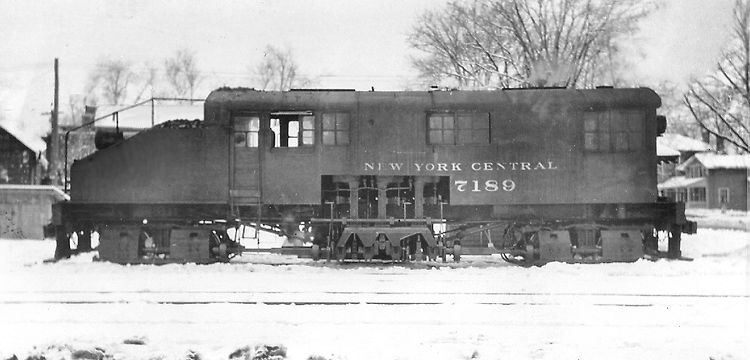Geared steam locomotives are usually associated with logging operations, where grades were steep and the track was light and temporary. The Shay geared locomotive used vertically thrusting cylinders to turn a shaft transmitting power to the trucks. These slow-moving locomotives, with their small wheels, offered greater leverage on hills and were easier on the track than conventional engines with their pounding side rods and counterbalances.
The New York Central was not known for logging operations, but its 1940 roster listed five Shay type locomotives, Nos. 7185-7189 (originally numbered 1896-1900). They were built in 1923 by Lima Locomotive Works for use on the West Side freight line in New York City, chiefly on street trackage on 10th and 11th Avenues. An old city ordinance required them to be covered to avoid frightening horses, and they also had to be preceded by a horse and rider when operating in the street. When most of the street trackage was removed and the West Side line was electrified around 1932, the Shays were replaced by box-cab diesels that could also run from third-rail electrification or on battery power (class DES). The Shays were transferred to western New York State for use on the Genessee Falls Railway, an industrial line in Rochester, and the Owasco River Railway, with trackage around Auburn — both NYC subsidiaries. (Thanks to Gordon Davids, Wayne Koch and an unidentified respondent for much of this background information.)
The NYC Shays had three 12x12-inch cylinders that, through the gears, drove 36-inch wheels. They weighed 139,400 pounds, and with 200 p.s.i. of boiler pressure they developed 27,320 pounds of tractive effort. This broadside view of No. 7189 was taken in March 1940, in snow-covered Auburn, New York by an unknown photographer. (Note: The image has been digitally altered to remove a water standpipe which appeared to be a part of the coal bunker, but was actually behind the locomotive.) This NYC oddity was taken out of service in 1942 and scrapped in 1944.
